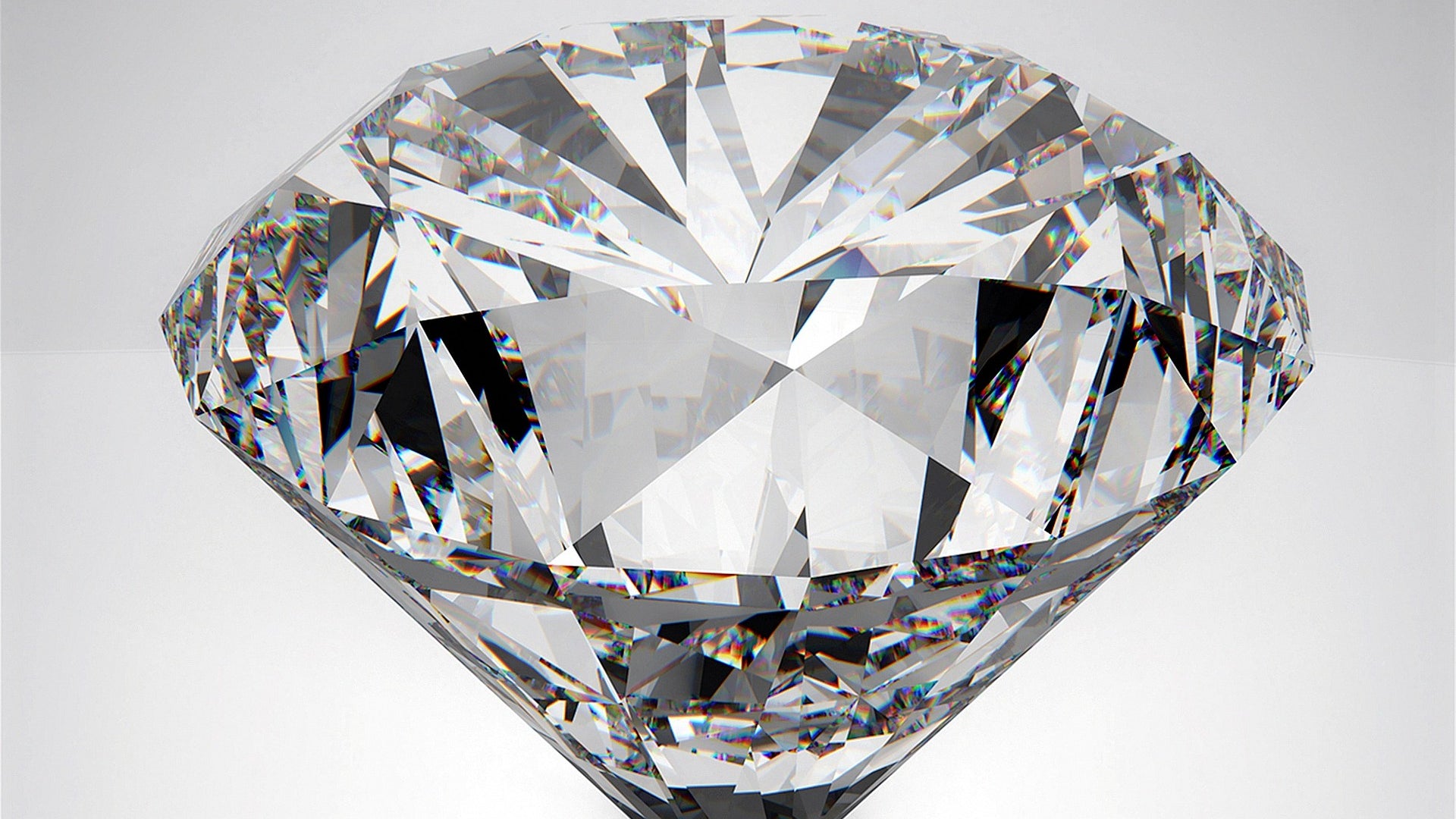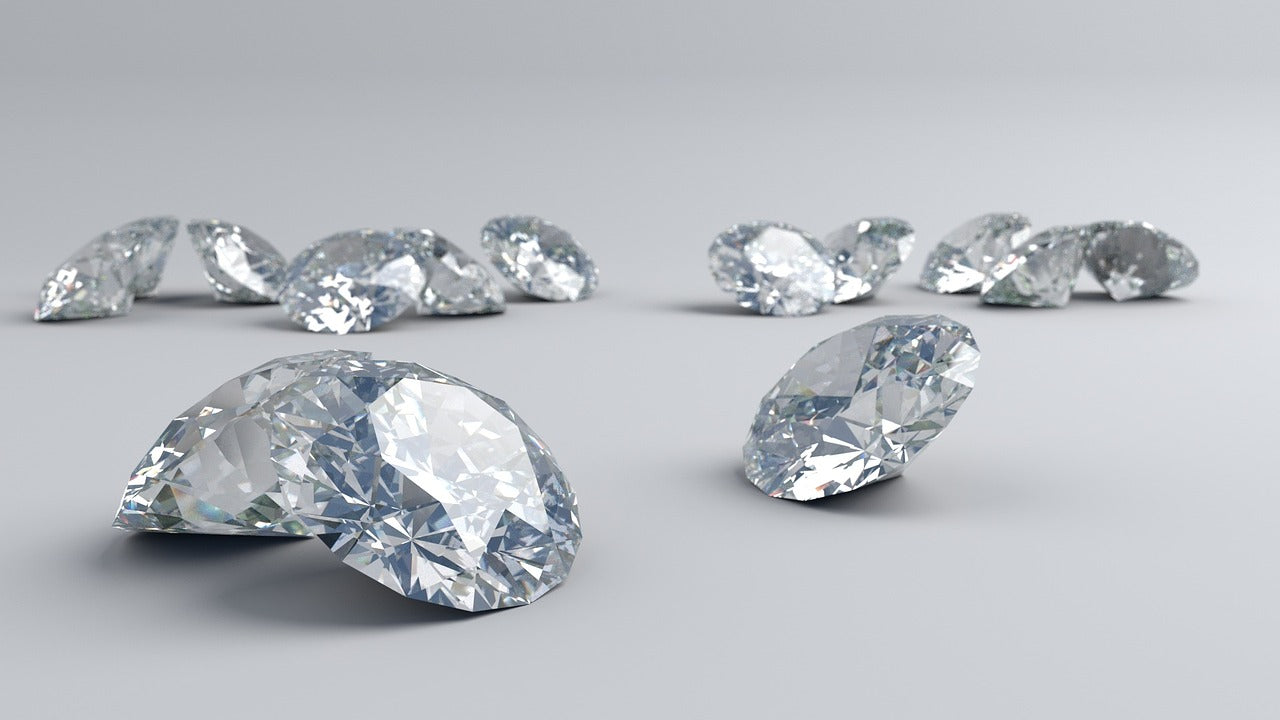The significance of a diamond's polish and symmetry in evaluating the overall quality of a diamond is roughly 50%. These two criterias are included in diamond certificates, also known as are grading reports. To obtain an ideal stone, the stone must have the proper polish and proportions. Nothing more than a perfectly-cut center stone may make an engagement ring or bridal set look gorgeous and ideal. Let's examine each element in more detail.

What is a Diamond Polish and How is it Graded?
Diamond polish is the surface finish of the stone which is achieved after it is cut. It is graded as Poor, Fair, Good, Very Good, and Excellent. A well-polished diamond creates a clear and brilliant performance whereas a diamond with a few marks, scratches and other imperfections can affect the light that traverses to and fro the facets.
GIA established a grading system for a diamond polish that can influence the overall quality and price of the stone. The following sections below present different polish features when assessed under 10x magnification by a diamond grader. The grading of diamond surface conditions or imperfections relies on visual inspections conducted by a certified or expert jeweler.
Different Polish Features
Nick (Nck)
A little groove on a facet junction, typically at the culet or along the girdle.
Abrasion (Abr)
Instead of a crisp facet junction, a region of small scratches or pits along a facet edge produces a fuzzy white line. A number of nicks may also be referred to as abrasion.
Burn (Brn, Dop)
There are two types of polish burn. First is “Burn” which is a whitish haze that results from high heat during polishing or from a jeweler's torch. Second is the “Dop” which refers to a burn mark brought on by extreme heat at the spot where the dop touched the diamond. A dop is a special holder where the diamond is put into place during polishing.
Laser Manufacturing Remnant (LMR)
A translucent or white groove is only deemed polish if it cannot be seen when the diamond is magnified 10 times.
Lizard Skin (LS)
It is a result of off-grain polishing, creating an uneven texture.
Pit (Pit)
A tiny opening looking like a white dot.
Rough Girdle (RG)
a bruted girdle's surface that is left unpolished.
Scratch (Scr)
A thin, straight or curved white line.
Polish Lines (Wht, TP, Drag line, Polish mark)
Little perceptible, white or translucent, fine lines.

POLISH FEATURE LOCATIONS
Bezel Facet (bez)
Chevron Facet (chevron)
Crown Corner Step Facet (crown corner step)
Crown (crown)
Crown Facet (crown facet)
Crown Step Facet (crown step)
Culet (culet)
Girdle (girdle)
Half-Moon Facet (half-moon)
Lower Half Facet (l.h.)
Pavilion Main Facet (main)
Pavilion (pav)
Pavilion Corner Step Facet (pav corner step)
Pavilion Facet (pav facet)
Pavilion Step Facet (pav step)
Star Facet (star)
Table Facet (table)
Upper Half Facet (u.h.)
Diamond Symmetry and Grading
Diamond symmetry is the shape, outline and alignment of the facets. Same as the diamond polish, symmetry is graded as either Poor, Fair, Good, Very Good, and Excellent and is graded under 10x magnification. Symmetry promotes a perfect appearance of the diamond when viewed face up or from the side.
Below is a symmetry grading system are based on GIA's standards. This grade is also common with other diamond certifying organizations such as IGI and AGS.




What to Consider on Diamond Polish and Symmetry
Polish and symmetry are two diamond characteristics that go hand and hand. Both affect the diamond’s brilliance. If the diamond is poorly polished with surface flaws like abrasions and scratches, the light is distorted and makes the stone look hazy and less sparkly. Same as when the symmetry is askew where the individual facets are misaligned, the light that enters the table is reduced and makes the stone look dull to the observer.
The ideal way to proceed is to choose anything from Very Good to Excellent if you're looking for a certified diamond and unsure of what grading level is appropriate for a quality stone as far as polish and symmetry are concerned. Poor, Fair, and Good ratings can still create a stunning diamond, but they might not be as exceptional as higher grades.
When you plan to resell the diamond down the road, polish and symmetry should be highly regarded and getting a lab certified diamond is a wise decision. However, If buying on a budget, diamond polish and symmetry can be counteracted by a good diamond setting. In engagement rings and bridal sets, accent stones can mask the ring imperfection of the center stone and can elevate the overall performance of the ring. Regardless of what diamond quality you end up getting, it is always the thought that counts.
If unsure, consult a trusted jeweler who can guide you on the diamond quality that closely reflects your preferences. You can also arrange a FREE consultation with us, and we'd be pleased to assist you from start to finish in finding your perfect ring.


